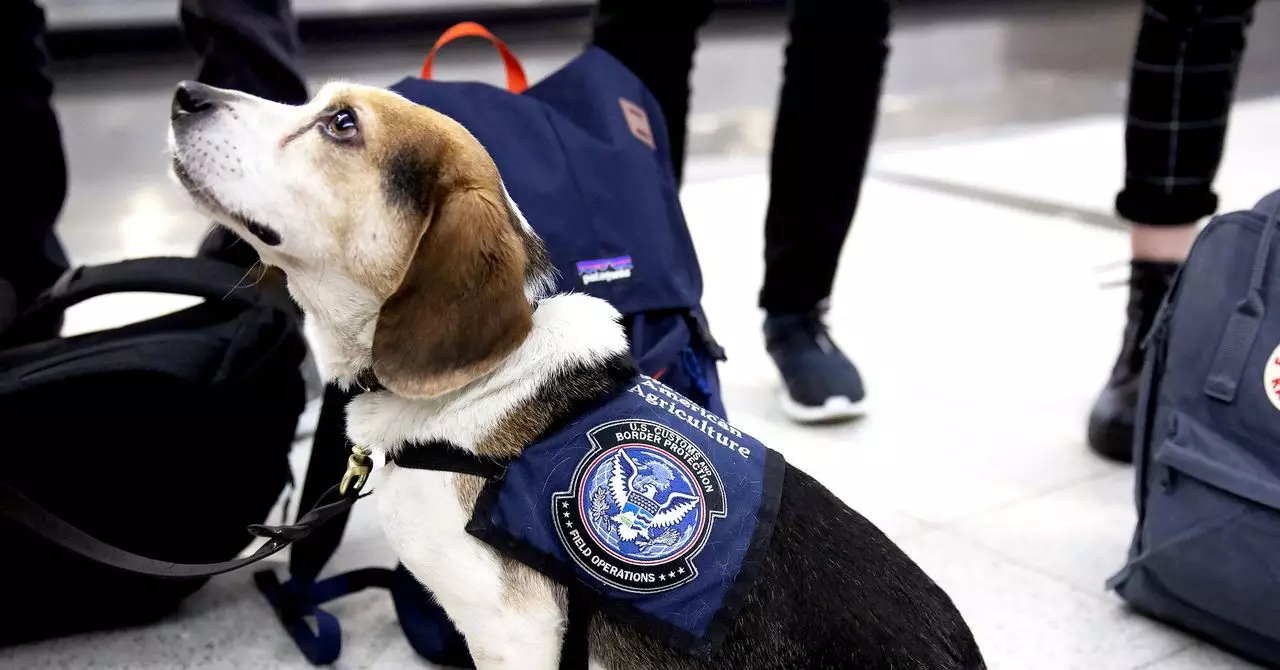The recent wave of terminations at the U.S. Department of Agriculture (USDA) epitomizes a systemic disregard for the complexities involved in agricultural and food safety oversight. The exodus of about 6,000 employees—especially specialized trainers and inspectors—has left a gaping void in vital programs such as the Plant Protection and Quarantine initiative. Figures like Derek Copeland, who served as a trainer at the National Dog Detection Training Center, throw open the curtains to a tragic narrative unfolding within an agency responsible for safeguarding American agriculture. The impacts of losing one-fifth of the USDA’s trainers, alongside critical support staff, are far-reaching, compromising both the safety of the food chain and the health of various ecosystems.
The Unseen Threats of Invasive Species
Copeland’s insights hit home hard, expressing a concern not often acknowledged by the general public: the constant influx of invasive species threatening domestic agriculture. In his efforts to train canines capable of detecting insects and mollusks like the Giant African land snail, he provided a frontline defense against biological incursions that could otherwise wreak havoc on local farming. The cuts at the USDA, however, jeopardize that defense. Experts warn about the repercussions of reduced staff, emphasizing that it takes years to train personnel adept at identifying non-native pests. This isn’t just about dogs and their trainers; it’s a matter of national security concerning food production and ecological balance.
The Economic Implications
Economically, the USDA’s staffing cuts create a perfect storm for escalating food prices and potential food spoilage. Industry experts, including regulatory affairs managers and supply chain veterans, voice alarm over the rippling effects of slower inspections at major ports like Los Angeles and Miami. Joe Hudicka, a software CEO attuned to the supply chain disruptions, underscores that the food left unchecked at ports will inevitably go bad. The loss of around 60% of skilled inspectors in some areas could disrupt the very supply chains America relies on for fresh produce and staple items, leading to increased grocery bills for consumers already feeling the pinch from inflationary pressures.
Replacing Expertise with Technology: A Misguided Solution
One of the most significant errors evident in recent USDA reforms is the misguided belief that technology can seamlessly step in where trained professionals once stood. Artificial intelligence may bring numerous advancements to logistics and monitoring, but the nuanced, unpredictable nature of invasive species detection cannot be automated. As experienced USDA workers have aptly noted, “it’s not something that is easily replaced.” This underestimation of biological management and the complexities of pest control could lead to disastrous consequences, including new outbreaks of diseases that not only threaten crops but also human health.
The Undeniable Expertise at Risk
The USDA’s workforce is not comprised of mere procedural inspectors; it encompasses entomologists, taxonomists, and biological scientists whose expertise cannot be quantified within an algorithm. The departure of these highly skilled individuals represents a loss of institutional knowledge essential for making informed decisions about agricultural policy, trade implications, and environmental stewardship. The reliance on specialists is paramount; their absence will be keenly felt whether through delayed responses to pest threats or the diminishment of agricultural productivity.
The Myth of Government Efficiency
The so-called initiative sparked by the Trump administration, dubbed the Department of Government Efficiency (DOGE), raises profound questions about the priorities underpinning governmental operations. Efficiency should not come at the cost of diminishing public health and environmental protections—areas where the USDA plays a pivotal role. A more responsible approach would prioritize strategic resource investment, acknowledging the value of expertise over superficial cost-cutting measures. Ultimately, this situation exemplifies a flawed understanding of what constitutes effective government: a strategic alignment of resources that safeguard not just fiscal health, but also the agricultural and ecological integrity of the nation.
This situation is more than an administrative issue; it is a wake-up call for policymakers, stakeholders, and citizens alike. The future of America’s agriculture—and by extension, food security—hangs delicately in the balance, necessitating immediate and informed responses that recognize the urgency and gravity of the crisis.

